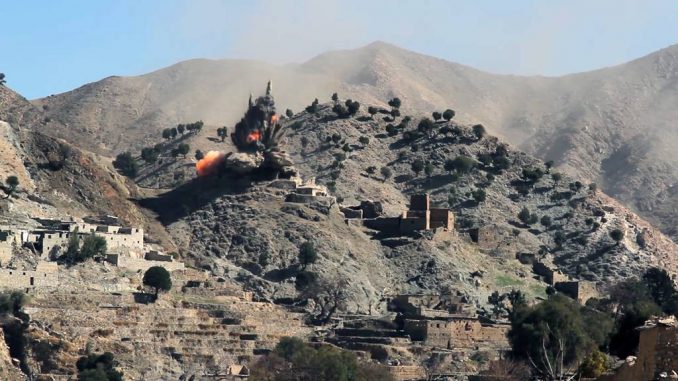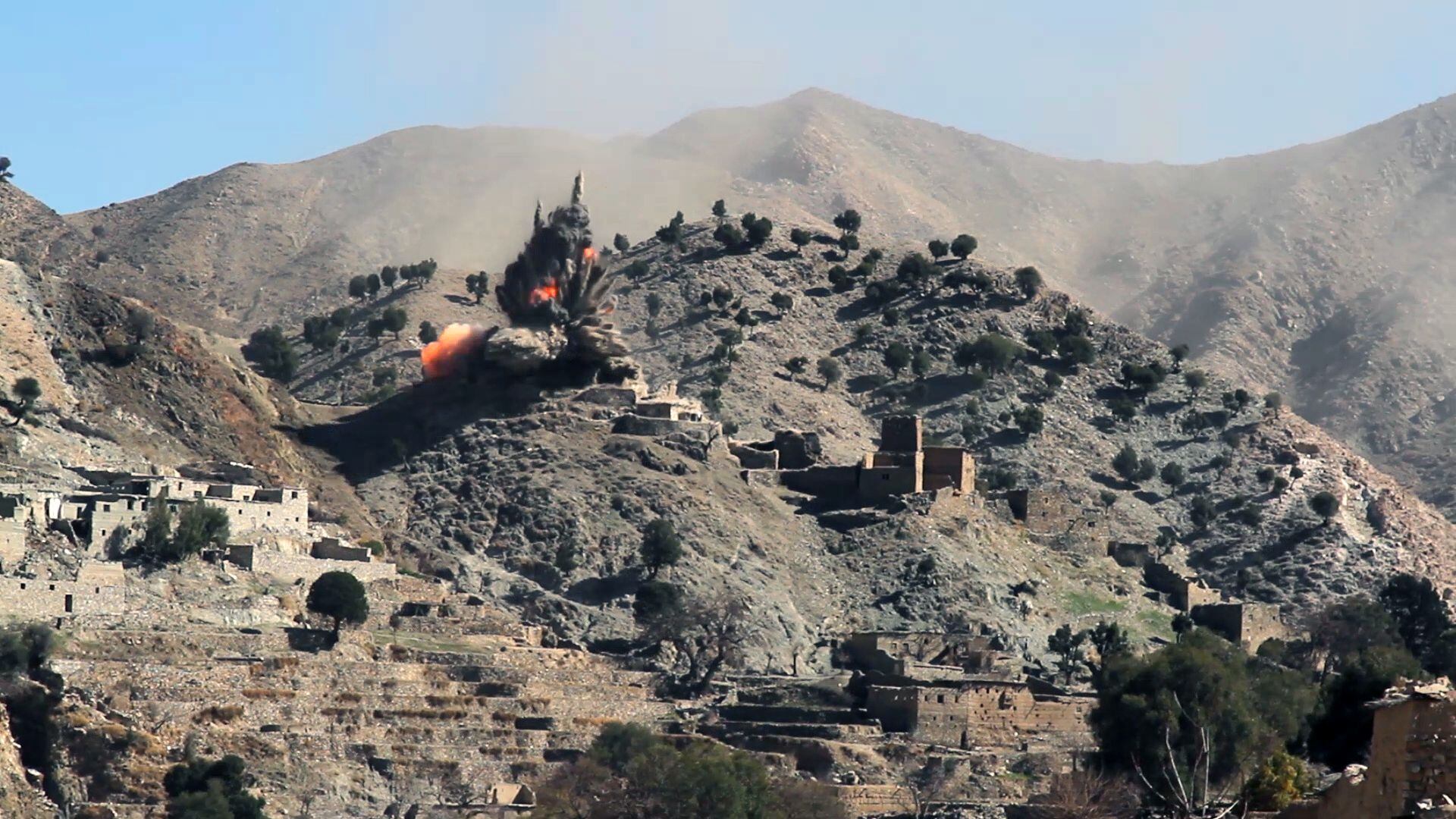

A suicide bomber rocked Hamid Karzai International Airport on Aug. 26, leaving at least 13 American troops and more than 170 civilians dead, as allied evacuation efforts continued in Kabul, Afghanistan.
The attack was claimed by Islamic State of Iraq and the Levant – Khorasan Province, known as ISIS-K or ISIS-KP, which is an affiliate of the central ISIS group primarily operating in Afghanistan and Pakistan. The group, which practices a more violent strain of Islam than the Taliban, capitalized on the chaos of the drawdown as the Aug. 31 deadline for foreign troops to leave the country drew near.
“I’ve ordered my commanders to develop operational plans to strike ISIS-K assets, leadership and facilities,” President Joe Biden said in a White House address Thursday. “We will respond with force and precision at our time at the place we choose in a moment of our choosing.”
Was this the deadliest ISIS-K attack?
The Aug. 26 attack is the most deadly in ISIS-K history. The group, however, has managed a terror campaign aimed at minority religious and ethnic groups throughout its stay in the country. Attacks include hospital and school bombings this year.
In June, U.N. officials said ISIS carried out 77 attacks in Afghanistan during the first four months of 2021. And the U.S. State Department has warned that more violence may be in store between now and the completion of Tuesday’s troop withdrawals.
ISIS “is thought to be behind an attack last year on a maternity ward, where gunmen in suicide vests mowed down pregnant women before blowing themselves up,” the Los Angeles Times reported. “That same day, the group claimed an attack on a funeral procession that killed 32 people. [And] on May 8, as students at a girls school were leaving the building for the day, a car bomb detonated.”
What will ISIS-K do with the U.S. and allied forces leaving Afghanistan?
“I expect that ISIS will continue to ramp up pressure against the Taliban to embarrass it, to show that it is not effective in governing the people of Afghanistan,” said Jason Blazakis, a think tank senior research fellow at the Soufan Center. “ISIS is going to try to sow chaos and cause instability with an eye to uprooting the Taliban over time. What happened Thursday is the first strike in this effort.”
Within Afghanistan, escalating violence between ISIS-K and al-Qaeda, the Taliban and the Haqqani network, which are all interconnected, indicates that the although the U.S. War on Terror in Afghanistan is ending, a bitter fight is just beginning.
How did ISIS move into Afghanistan?
The centralized ISIS organization traces its roots back to al-Qaeda, but rejected that group’s authority and broke off. It came to the forefront in 2014 after invading Mosul, Iraq. The group identifies with a minority sect of Sunnism called Salafism and was led by Abu Bakr al-Baghdadi, who served as the leader of ISIS from 2014 until his death by suicide bomb in 2019.
Its goal in conquering large swaths of land was to establish a caliphate that would serve as a global battlefield. Ultimately, ISIS is seeking to fulfill an apocalyptic prophecy about a battle that will bring about the end times.
“The specific scripture they are referring to describes a battle in Dabiq as well as in al-Amaq, small towns that still exist in northern Syria,” the New York Times reported. “The countdown to the apocalypse begins once the ‘Romans’ — a term that militants have now conveniently expanded to include Americans and their allies — set foot in Dabiq.”
The Khorasan group formed in Afghanistan in January 2015 and not only fights U.S. troops but also considers the Taliban among its enemies. It derives its name from a reference to an historical region under a caliphate that once encompassed parts of Afghanistan and Pakistan into southwest Asia.
According to CNN, the relationship between ISIS and its Khorasan branch is unclear on everything from ideology to hierarchy and communication or direction from organizational leadership to this particular faction.
“ISIS had sent representatives to both Pakistan and Afghanistan,” Seth Jones, an Afghanistan specialist at the Center for Strategic and International Studies, told NPR. “They were essentially able to co-opt some disaffected Pakistani Taliban and a few Afghan Taliban [members] to join their cause.”
How did ISIS-K gain a foothold in Afghanistan?
Recruitment efforts early on showed promise, helmed by Hafiz Saeed Khan and former Afghan Taliban commander Abdul Rauf Aliza as his second.
“They (IS loyalists) came in on many white pickup trucks mounted with big machine guns and fought the Taliban. The Taliban could not resist and fled,” Haji Abdul Jan, a tribal elder from Achin district told Reuters in 2015. “Unlike the Taliban, they (IS) don’t force villagers to feed and house them. Instead, they have lots of cash in their pockets and spend it on food and luring young villagers to join them.”
Within a relatively short period of time, it managed to gain control in several rural districts, and established a base in the eastern province of Nangarhar.
By 2018, the Institute for Economics and Peace’s Global Terrorism Index ranked it among the top four deadliest terrorist organizations in the world.
How many ISIS-K fighters are in Afghanistan?
“At the height of its strength, the group was believed by U.S. officials to number 2-3,000 fighters, but likely commands many fewer today,” the Wall Street Journal reported.
Four years ago, U.S. efforts to disrupt a growing ISIS-K dealt a decisive blow to the group’s activities by killing Abu Sayed, the emir of ISIS-K in a strike on the group’s headquarters in Kunar Province, Afghanistan, July 11, 2017. Sayed was tapped to lead the organization after U.S. and Afghan troops killed the previous leaders Abdul Hasib, in April of 2017, succeeding Khan, who was killed in July of 2016.
“In one sense or another, by 2019, the group is pretty decimated — at the end of 2019, over 1,400 fighters and their families surrendered to government forces in northeast Afghanistan,” said Andrew Mines, a research fellow at the Program on Extremism at George Washington University in an interview with Vox. “This is really where we start to see this messaging, especially by the Afghan government, that ISIS is defeated in the country, and that there’s no more ISIS here. That’s when we really see ISIS-K go back to this survival mode, like low-level insurgency.”
Sarah Sicard is a Senior Editor with Military Times. She previously served as the Digital Editor of Military Times and the Army Times Editor. Other work can be found at National Defense Magazine, Task & Purpose, and Defense News.


Be the first to comment